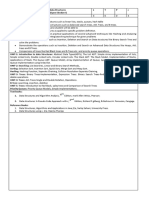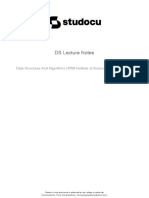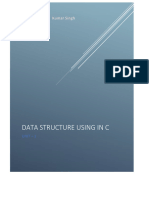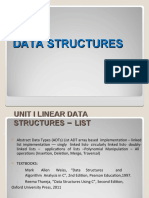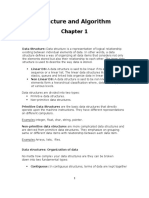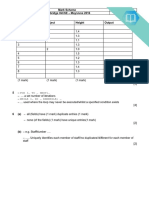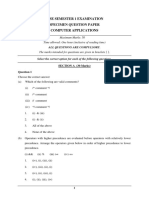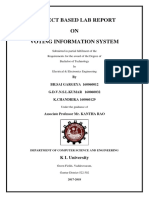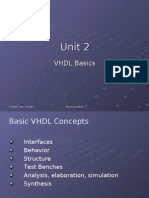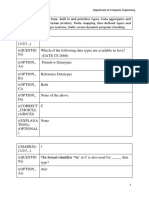0% found this document useful (0 votes)
70 views39 pagesDS Firstchapt Introduction
The document discusses various topics related to data structures including data vs information, classification of data structures, abstract data types, and operations on data structures. It defines key concepts such as primitive vs non-primitive, linear vs non-linear data structures. Examples of different data structures like arrays, linked lists, stacks, queues, trees and graphs are provided along with their characteristics and operations. The difference between data structure and file organization is also highlighted.
Uploaded by
Jayashree Borkar [LUC]Copyright
© © All Rights Reserved
We take content rights seriously. If you suspect this is your content, claim it here.
Available Formats
Download as PPTX, PDF, TXT or read online on Scribd
0% found this document useful (0 votes)
70 views39 pagesDS Firstchapt Introduction
The document discusses various topics related to data structures including data vs information, classification of data structures, abstract data types, and operations on data structures. It defines key concepts such as primitive vs non-primitive, linear vs non-linear data structures. Examples of different data structures like arrays, linked lists, stacks, queues, trees and graphs are provided along with their characteristics and operations. The difference between data structure and file organization is also highlighted.
Uploaded by
Jayashree Borkar [LUC]Copyright
© © All Rights Reserved
We take content rights seriously. If you suspect this is your content, claim it here.
Available Formats
Download as PPTX, PDF, TXT or read online on Scribd
/ 39








